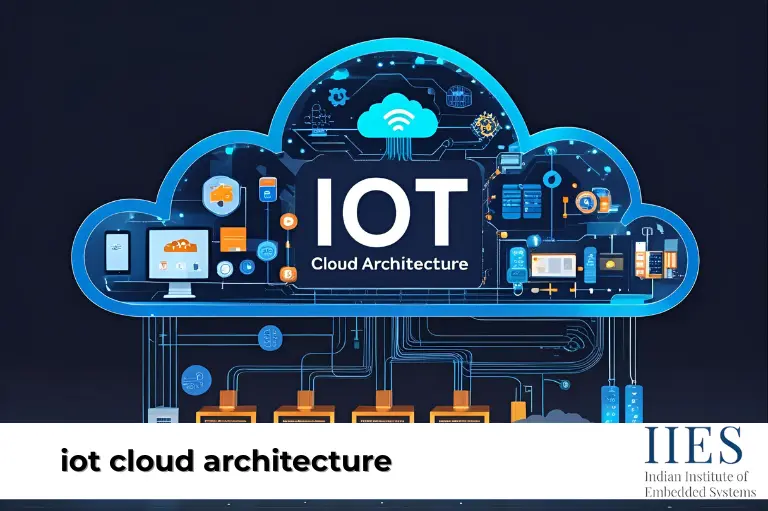
IoT cloud architecture is the backbone of smart devices and connected systems. It connects IoT devices with cloud platforms, enabling real-time data processing, analytics, and decision-making that drive innovation in industries, cities, and everyday life
IoT Cloud Architecture links devices, sensors, and cloud platforms to deliver real-time insights, automation, and smarter decisions. It drives efficiency, innovation, and future-ready solutions across industries.
The Internet of Things (IoT) is more than just “smart devices.” It’s an ecosystem where devices, sensors, networks, and cloud platforms work together to collect, process, and share data. The framework that makes this possible is called cloud based IoT architecture.
Think of it as the bridge between the physical and digital worlds. IoT and cloud computing work together as Sensors gather information like temperature, motion, or pressure, and then the cloud processes this data to create meaningful insights. These insights power real-time decisions—like controlling machines, optimizing energy, or even predicting equipment failures.
An IoT system is not a single technology but a layered structure. Each layer has a specific function, and together they form a complete 7 layer IoT architecture.
Example: A wearable fitness band that tracks heart rate and sends the data to the cloud, part of IoT cloud applications.
Example: Smart home devices often use Wi-Fi or Zigbee to connect to the cloud through a hub. This is a critical part of cloud computing for IoT.
This layer demonstrates the role of cloud in IoT, ensuring reliable data management.
Example: Predictive maintenance in factories using internet of things cloud computing.
IoT generates sensitive data, so security is critical.
Example: A smart healthcare device must secure patient data to meet privacy regulations—a key feature in 5 layer architecture of IoT.
This layer is a prime example of 7 layer architecture of IoT.
Beyond its structure, IoT cloud architecture provides unique functionalities. These include scalability, real-time data analytics, interoperability, and reliability that make it suitable for different industries.
IoT cloud architecture shapes innovation, efficiency, sustainability, and smarter decision-making in today’s connected world.
| Feature | Benefit |
|---|---|
| Scalability | Handles millions of devices efficiently |
| Real-Time Processing | Enables instant decisions for critical apps |
| Interoperability | Ensures smooth communication between devices |
| AI & Analytics | Predicts failures and trends |
| Reliability | High uptime & disaster recovery |
IoT cloud architecture connects devices, sensors, and cloud platforms to make smart decisions in real time. From healthcare to farming, it improves efficiency, saves resources, and drives innovation. As IoT continues to grow, learning cloud computing for IoT will be key for students, professionals, and businesses to succeed in the future.
It is the structure that connects IoT devices, sensors, and cloud platforms to process data and enable smart actions.
It allows devices to share data, get analyzed in real-time, and support automation and intelligent decisions.
Key components include IoT devices, sensors, communication networks, cloud servers, and data analytics platforms.
Devices collect data through sensors, send it via networks to the cloud, where it is processed and sent back for action.
Popular platforms include AWS IoT, Microsoft Azure IoT, Google Cloud IoT, and IBM Watson IoT for managing devices and data.
Yes, it uses encryption, authentication, and secure protocols to protect data and control access to devices.
Indian Institute of Embedded Systems – IIES